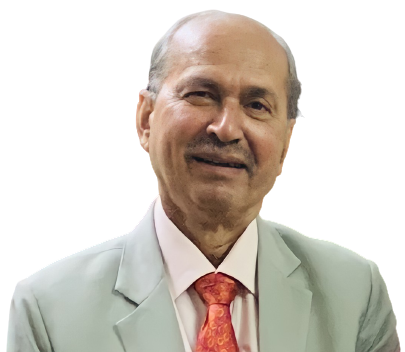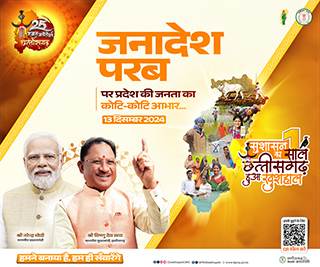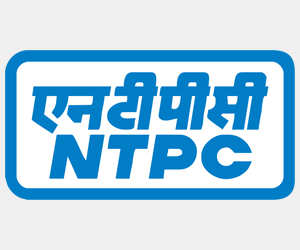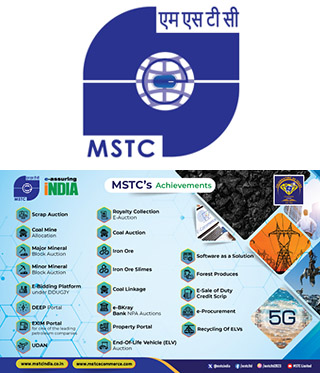whispers in the corridors

By- Santosh Chowdhury, Editor Digital
The Indian Civil Service has its own illustrious history and it has produced legends all through. There is still one oldest living officer each from the IAS and IPS who take us back to days of an era immediately after end of the British Raj. Here is the profile of the two officers.
 Sardar Saran Singh, I.A.S. (Retd.)—country’s oldest living civil servant born on August 23, 1923 now at age 96 years continues to inspire many young civil servants . Currently, President of Sikh Cultural Centre, Kolkata and Editor of the SIKH REVIEW, Kolkata, has attained a prominent position in the realm of Sikh journalism.
Sardar Saran Singh, I.A.S. (Retd.)—country’s oldest living civil servant born on August 23, 1923 now at age 96 years continues to inspire many young civil servants . Currently, President of Sikh Cultural Centre, Kolkata and Editor of the SIKH REVIEW, Kolkata, has attained a prominent position in the realm of Sikh journalism.
As the (Honorary) Editor of the only Sikh Monthly journal of long standing, he has displayed immense labour of love, ceaseless devotion and great missionary zeal for the spread of Sikhism. His insight into Gurbani and Sikh History is evident from the special issues of the Sikh Review which highlight the significance of the tenets of Sikhism and the Saga of Sikh History.
Born in Peshawar (NWFP) Sardar Saran Singh studied at the
On deputation to Govt. of India at New Delhi, Sardar Saran Singh served as the Secretary to Government of India - successively, in the Ministries of Steel, Social Welfare, and the Department of Textiles, before retiring in 1981. He was subsequently appointed Adviser to the Governor of Assam (Feb 1982 to Feb 1983) during the President's Rule in the troubled state. Sardar Saran Singh has represented
After retirement, he settled down in Kolkata. On Capt. Bhag Singh Ji's age related illness in 1984-85, he had to step in to take up the editorship of the Sikh Review. This Labour of Love has been a boon for the journal. He is widely respected for his incisive analysis of, and forthright approach to, national and Panthic issues. Through his enlightened editorials and careful selection of material published in the Journal he has made a significant contribution towards propagation of the beneficent message of Sikhism – as a World Religion. He was invited to attend the International Congress of the World’s Religions, held at Chicago (USA) in 1993 and also in its next session at
India’s oldest living IPS Officer- H M Joshi
 Many young Indian Police Service (IPS) officers may not be knowing about country’s oldest living Indian Police Service (IPS) officer H M Joshi now at age 94 who was among the first batch of IPS officers in 1948.
Many young Indian Police Service (IPS) officers may not be knowing about country’s oldest living Indian Police Service (IPS) officer H M Joshi now at age 94 who was among the first batch of IPS officers in 1948.
The former IPS officer at this advanced age never misses his morning exercises and is a voracious reader. My conversation with whipersinthecorridors.com, the officer recounted the early days of IPS and how it all began a year after
Q1. Sir please tell us something about the training of the first batch of IPS officers.
The Central Government had established the ‘
Q. How many officers were there in the first batch?
There were 39 officers out of which four were allocated Madhya Pradesh cadre-mainly myself ( H M Joshi), P R Rajgopal, V V Naik and V V Bhinge.
Q. Was there a syllabus for the training course in the College?
Yes there was. In fact, the syllabus was prepared in a hurry which had subjects like Criminal Law, Forensics, Building Construction besides the training aspects such as PT, Horse riding and use of fire arms.
Q.In which year did you join your cadre Sir and what was your rank?
I joined my cadre on September 1948 as Probationary Assistant Superintendent of Police in Sagar district. For a year I was assigned duties from Sepoy, Havildar, Police Station In-Charge, Thana Munshi to SDO.
Q. Sir you had joined the force when dacoity was at its peak in Madhya Pradesh. Please tell us about how were those days as a police officer.
The period of 1956-57 had seen dacoity at its peak in Madhya Pradesh and there were about 500 to 600 small and big dacoity gangs operating in the Chambal ravines those days. Some of the gangs even carried arms such as machine guns, TMC and even hand grenades.
Q. How did you tackle the dacoity problem Sir?
I had suggested seniors to divide Chambal into five zones and every zone be divided into a Sector. Apart from SP in the district , a DSP for all zones was suggested who would be aided by Section Commander of DSP rank and a Zone Commander of SP level.
Q.Was there system of Central deputation that time?
Yes. Yes… I was sent on Central deputation in Central Special Service Bureau then I was asked to join my cadre in March 1979. When I came back to Madhya Pradesh, I was asked to join as DIG, SAF.
Q. Were you involved in anti-dacoity operations in Chambal?
A. In May 1969, I was appointed as
Q. Sir how successful was your anti-dacoity drive?
We created an elaborate intelligence network and brought down many of the dacoits in encounters by surrounding them.In the very first encounter we brought down 17 dacoits in Chambal ravines.

Send Feedback
- Chandrani Gupta is also CVO, Projects India Limited (UPDATED)
- Navdeep Suhag to look after Prime Minister's Internship Scheme (UPDATED)
- JNPA issues Letter of Award for project of agro processing facility (UPDATED)
- Rajesh Arya appointed as NTRO Chief (UPDATED)
- Reshuffle of IAS officers in Odisha (UPDATED)
- Roohi Khan prematurely repatriated to parent cadre (UPDATED)
- Post held by K K Tiwari re-designated as Director (UPDATED)
- Post held by Noqvi re-designated as Director (UPDATED)
- Post held by Kapil Patidar re-designated as Director (UPDATED)
- Post held by Madhu Sharma re-designated as Director, CVC (UPDATED)
- 3 Officers of SFS of HP cadre promoted to IFoS (UPDATED)
- S K Awasthi appointed DGF, MoEF & CC (UPDATED)
- Arlekar takes oath as the 23rd Governor of Kerala (UPDATED)
- Senior IPS officer Gurjinder Pal Singh finally joins PHQ, Raipur (UPDATED)
- HURL: Empowering a greener future (UPDATED)
- Uttarakhand Tourism signs MoU with ITBP to promote tourism in border villages (UPDATED)
- DAE, Mumbai officers promoted to DCA grade
- Niranjan Kumar transferred to IFA (WNC), Mumbai
- RLDA seeks senior Civil officials
- RLDA advertises for General Manager-Projects, Delhi
- M K Bansal joins BSNL on promotion
- Last date to apply for DGFASLI, Mumbai extended
- Interview dates for Assistant Director -Hosiery, MSME soon
- Reshuffle of IPS officers in Chhattisgarh
- Reshuffle of IPS officers in Kerala
- 83 IRSEE officers appointed to officiate in JAG
- PK Gupta moved as PCSTE, SER
- Rajneesh Kumar posted as PCSTE, Western Railway
- 12 IFoS officer in Rajasthan promoted to Selection Grade
- Seven IFoS officer in Rajasthan promoted as CF grade
- Six IAS officers in Rajasthan promoted to STS
- Nine IAS officers in Rajasthan promoted to JAG
- 7 IAS officers in Rajasthan promoted to Selection Grade
- Shortage of 25 IFoS officers in Bihar cadre
- Shortage of 51 IFoS officers in A-M cadre
- 4 IPS officers in Kerala promoted to Senior Time Scale
- T J Kavitha promoted to grade of APCCF in Rajasthan
- Lateral entry posting of B K Jha extended
- Post of Vinay Kaushal upgraded to Director level
- Post of Pankaj Dixit upgraded to Director level
- Post of Sanap Bajirao Ramnath upgraded to Director level
- Post of Avinash Nilankar upgraded as Director, Expenditure
- Post of Ms Wormila Jasmine Keishing upgraded as Director, CVC
- Post of Ms Sweta Mohanty upgraded as Director, Cabinet Secretariat
- Post of Ms R Menaka upgraded as Director, Cabinet Secretariat
- Tenure of Ashok Das as Director (HR), Oil India Ltd ends
- Atul Kumar Goel retires as MD & CEO, PNB
- Ashok Chandra to succeed Atul Kumar Goel as MD & CEO, PNB
- Ex-Army Chief Vijay Kumar Singh to take oath on January 9
- Rajnath Singh chairs meeting of all Secretaries of MoD
- Air Marshal Mishra assumes Command of IAF’s Western Air Command
- Justice Harpreet Singh Brar is Permanent Judge, Punjab & Haryana HC
- Bhuvnesh Kumar joins CEO, Unique Identification Authority of India
- Over 300 IAS officers retiring in 2025
- Who will succeed Madhabi Puri Buch ?
- Key positions in 2025 (2) SEBI Chief ending tenure this year


































